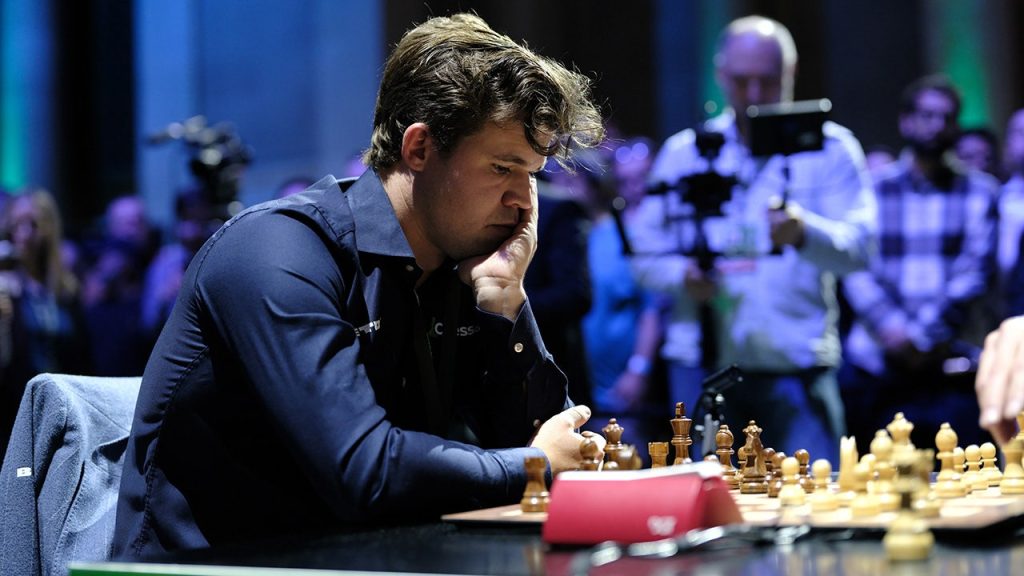The "Jeans Rebellion": Magnus Carlsen, Dress Codes, and the World of Chess
The world of chess, often perceived as a quiet battleground of intellect and strategy, found itself embroiled in an unusual controversy during the World Rapid and Blitz Championships in New York. At the center of the storm was Magnus Carlsen, the reigning world champion and arguably the greatest chess player of all time. The cause of the uproar? A seemingly innocuous pair of jeans.
The International Chess Federation (FIDE), the governing body of chess, enforces a dress code designed to maintain a professional image and ensure fairness. Carlsen’s choice of attire, deemed too casual by FIDE officials, triggered a chain of events that highlighted the sometimes-strained relationship between individual expression and established rules. The incident began with a warning and a fine, escalating to Carlsen’s dramatic withdrawal from the Rapid Championship, punctuated by a defiant statement expressing his displeasure.
Carlsen’s act of defiance raised several pertinent questions. Was the dress code too rigid, outdated, and out of touch with the evolving culture of chess? Was Carlsen’s reaction justified, or was it an overreaction from a player accustomed to having his way? The incident sparked a debate that extended beyond the chess community, touching upon broader themes of authority, individual liberties, and the appropriateness of dress codes in various social contexts.
FIDE’s response to the controversy added another layer of complexity. While acknowledging the need for a dress code, the federation also recognized the changing times and the importance of adapting to contemporary sensibilities. President Arkady Dvorkovich announced a loosening of the dress code for the Blitz Championship, allowing for "elegant minor deviations," including "appropriate jeans matching the jacket." This concession, while seemingly minor, represented a significant shift in FIDE’s approach, suggesting a willingness to balance tradition with modernity.
The "jeans rebellion" ultimately served as a catalyst for dialogue and change within the chess world. It forced FIDE to re-evaluate its dress code policy, prompting a move towards greater flexibility and a more nuanced understanding of what constitutes appropriate attire in the 21st century. It also highlighted the growing influence of individual players, especially those with the stature and platform of Magnus Carlsen, in shaping the future of the game.
The incident also brought to light the inherent tension between upholding tradition and embracing change in any established institution. While dress codes are often seen as a way to maintain order and professionalism, they can also be perceived as restrictive and outdated, especially when applied too rigidly. The challenge for organizations like FIDE lies in finding a balance that respects tradition while also accommodating the evolving norms and expectations of its members. The Carlsen incident served as a valuable lesson in navigating this complex terrain.
Beyond the immediate implications for the chess world, the "jeans rebellion" also resonated with broader societal discussions about dress codes and their relevance in various professional and social settings. It raised questions about the appropriateness of imposing strict dress codes, the potential for such codes to stifle individual expression, and the need for greater flexibility and sensitivity in their application. The incident served as a reminder that dress codes, while sometimes necessary, should be carefully considered and regularly reviewed to ensure they remain relevant and respectful of individual differences.
The controversy surrounding Carlsen’s jeans also touched upon the power dynamics within the world of chess. Carlsen’s willingness to challenge FIDE’s authority, even at the risk of forfeiting a major championship, underscored the growing influence of individual players, particularly those with global recognition and a strong following. The incident suggested a shift in the balance of power, with players increasingly asserting their rights and challenging traditional structures.
The incident also highlighted the evolving culture of chess itself. Once viewed as a purely intellectual pursuit, chess is increasingly seen as a form of entertainment, with a growing emphasis on personality and individual expression. Carlsen’s rebellious act, while controversial, also resonated with a younger generation of chess players and fans who value authenticity and individuality over strict adherence to traditional norms.
The "jeans rebellion," while seemingly trivial on the surface, exposed deeper currents within the world of chess. It revealed the ongoing tension between tradition and modernity, the growing influence of individual players, and the evolving culture of the game itself. The incident served as a catalyst for dialogue and change, prompting FIDE to re-evaluate its dress code policy and adapt to the changing times. It also underscored the importance of finding a balance between upholding established rules and respecting individual expression in any organized activity. The controversy surrounding Magnus Carlsen’s jeans ultimately became a microcosm of larger societal debates about dress codes, authority, and the evolving nature of professional and social norms.

